
Minerals & Vitamins
There is something of a stigma attached to the commercial trade in mineral and vitamin supplements for livestock. This has been historically fuelled by the pressure mineral sales personnel tend to imply by reeling off a long list of the dire effects of various mineral deficiencies, and then offering the solution, at a price. It’s not much different from selling insurance!
Many farmers view the whole area with a degree of scepticism, and whilst most would agree that mineral supplementation is likely to benefit the animals, the big question is, “by how much?” and “how cost effective is it?”
Mineral nutrition is a subject in its own right. Both the nutritionist and the vet have vested interests in the subject. This section will supply the reader with a resumé on the function and effects of each of the minerals and vitamins covered. Requirements of some of the trace elements are still a little sketchy due to differing estimates of need from the various bodies of expertise.
Minerals are absorbed into the body in two ways, Active absorption and Passive absorption.
Active absorbtion occurs when the element is transferred from the inside of the intestine (lumen), through the intestinal wall using energy.
Passive absorbtion is the norm for most minerals and is osmotic from a higher concentration to a lower concentration.
The availability of certain minerals is often significantly reduced by several factors
- The presence of antagonists such as Phytates and Oxalates.
- Interaction between minerals.
- Age. Younger animals tend to be more efficient at absorbing nutrients than older animals.
- Gut pH changes from neutral in the rumen (ideally between pH 6.7 and 6.3 to acidic in the abomasum and less acidic in the hind gut.
- The form of the mineral, Inorganic or Organic (Chelated).
Requirements
Every animal has individual dietary requirements which are determined by several factors.
- Size (body weight)
- age
- Physiological state (health) production, pregnancy, growth and maintenance.
- Sex
- Species
- Breed and genetics
- Diet
- Yield
- Health
- Form of the ingested elements
There is a working party based in the USA looking at a revision of nutrient requirements for all livestock. At the time of writing in early 2020 we already know what some of the changes are so I have done my best to include them in this document.
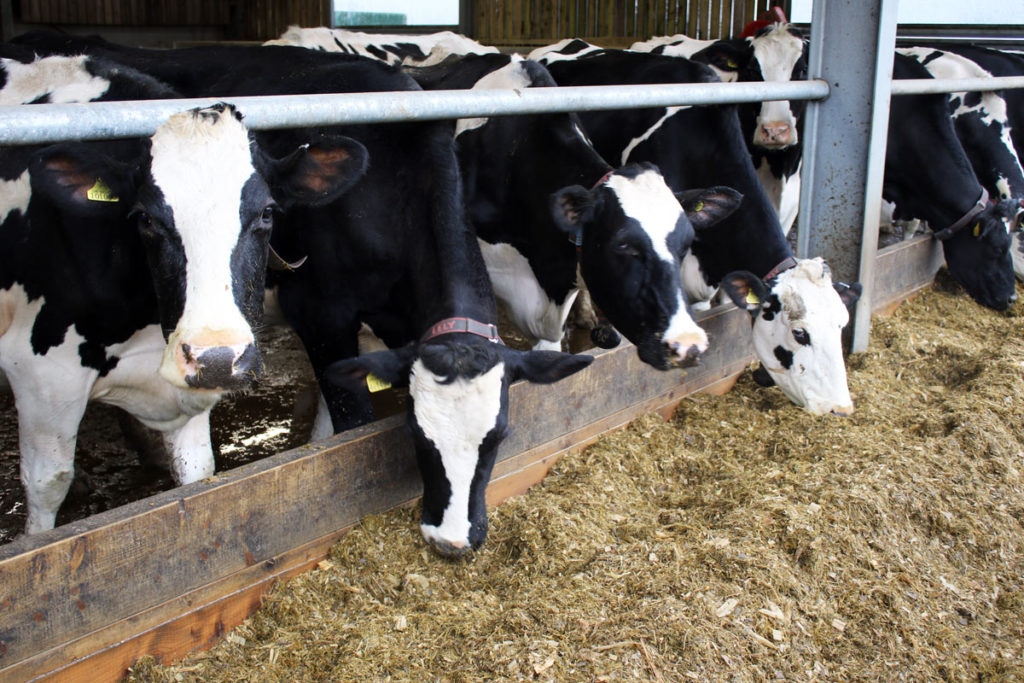
Immune systems, stress and disease.
Stress reduces the effectiveness of the immune system. This is called immune suppression. Some great work by Lance Baumguard and his team on leaky gut syndrome has done much to support this link.
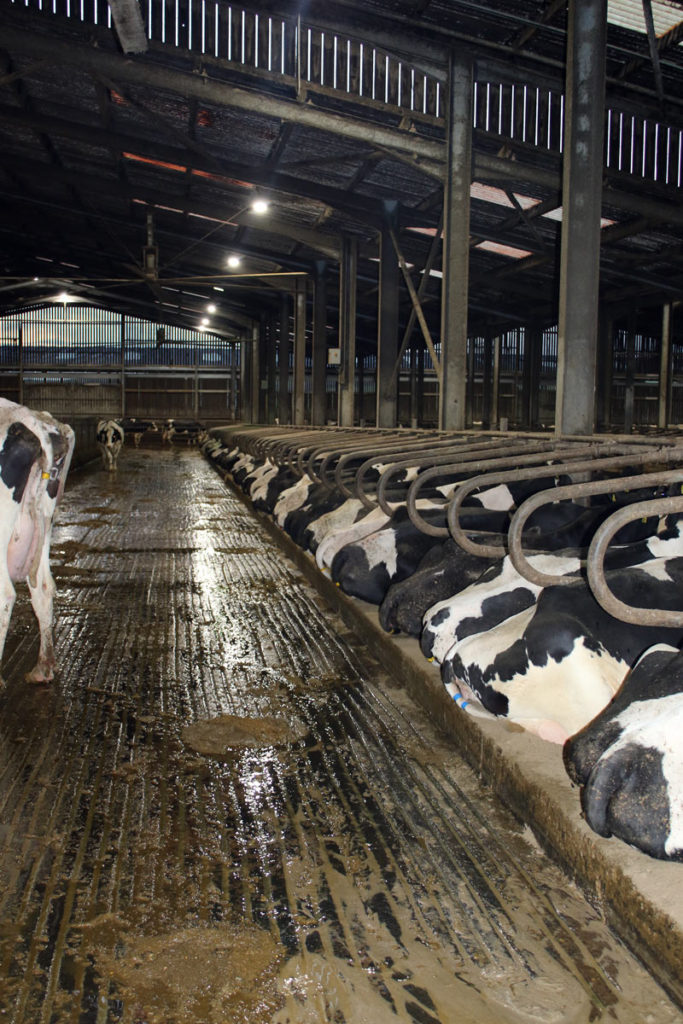
Note: Minerals are not the only nutrients to have effect on metabolic diseases and poor performance. Water consumption, mycotoxins, fibre, essential fatty acids and essential amino acids also have a contribution.
Immune suppression increases the risk of metabolic disease and clinical disease and infection.
Dairy cows that experience immune suppression are more susceptible to mastitis or uterine and other infections and are less responsive to treatment.
The simple rule is that since mineral nutrition is vital to maintaining the health and durability of the animal, it is good practise to take steps to ensure that at least the basic requirements are covered.
Tips for minerals
- Make sure young stock are fed supplements right through to calving or lambing. Failure to do this will inevitably affect longevity, and performance as adult animals.
- Pedigree bulls and tups require special attention to detail. Development of frame is certainly influenced by mineral supplementation.
- Fertility and feet are directly influenced by mineral supply and balance.
- The immune and hormone systems in the body have a very direct influence on disease resistance, and body function; mineral balances are known to directly affect both.
- UK conditions are very likely to provide an underlying forage and cereal selenium, copper, zinc and cobalt deficiency on most farms.
- Most UK farms will not provide enough background magnesium in spring.
- High output stock are more likely to suffer deficiency since they have generally been bred to produce much higher output levels than their ancestors could sustain easily from the nutrients supplied by natural grazing processes in natural un-farmed grasslands. As the genetic potential increases commercial animal will require a mandatory supplementation in order to thrive.
- Modern nutrition programs provide a good basis for dietary calculation.
- Modern laboratory analytical process means that sampling forages, milk, blood, and tissues for mineral content can soon put us on the right track to correct any problems. Note: Forage mineral analysis can be misleading because element availability is not usually featured.
- The level of antagonistic minerals like, molybdenum, aluminium, lead, iron & sulphur is providing an increasing challenge as natural loading increases in the environment; and animal production levels are driven to greater heights by the geneticists.
- The increase in techniques for supplementing minerals means that there are no excuses for not taking action.
- The only issue with regard to correct mineral supplementing is cost. Generally it is more costly to rely on “nature”, and in the long term this approach will cost more than providing the basic levels of supplement.
- Recent research suggests that we should broaden our horizons to look at the effects that some of the lesser minerals can have on animal performance. For example, current work in the USA suggests that we can improve lean to fat ratios in growing animals by supplementing Chromium.
- Treatment of pasture with organic seaweed based products (rich in available trace elements), also seems to have a significant effect not only on crop growth and yield but also on subsequent animal performance.
- Addition of mineral supplement via drinking water is becoming more popular as the accuracy of dispensation improves. The drawback is obvious, in that grazing animals will vary their intakes from water troughs according to the wetness of the grass.
All of the mineral elements have a number of functions to perform in the body, and they are carried out on a routine basis.
The functioning of enzymes, hormones and all body cells is critically affected by mineral elements.
A good example of a direct effect of minerals would be Iron, which is the key part of the red colouring of blood. Magnesium forms part of chlorophyll which is the green colouring of plant tissue, and an essential nutrient for body function.
Salt (sodium chloride) is the basis of the blood saline solution in which all of the blood cells, feed nutrients and minerals are transported around the body. Indeed the chlorine part of the sodium chloride is also used to produce the hydrochloric acid essential for processing food in the stomach
The optimum development of skeleton, (Framework) of the body is essential if lambs and calves are going to have a good conformation. 99% of body calcium, 80%of body phosphorous, and 70% of body magnesium are to be found in the skeleton.
Minerals are therefore essential nutrients and it is not surprising that dietary deficiency or extreme excesses, will give rise to major effects on productivity and can cause death.
Calcium
As already pointed out 99% of body calcium is to be found in the skeleton. Deficiency of calcium can have a dramatic effect on the performance of the animal.
Hypocalcaemia (Milk Fever, Lambing sickness)
The most dramatic and obvious problem caused by calcium deficiency is Hypocalcaemia otherwise known as “Milk fever” or “Lambing sickness”. Hypocalcaemia occurs just before during or just after lambing or calving. It is generally considered that the stress and reduced appetite which occur typically with hill ewes when they are gathered a few weeks before lambing, and cows on abrupt changes of diet, (especially those with high positive DCAD), will give rise to hypocalcaemia.
The symptoms are dramatic, the ewe or cow generally show a staggering gait, muscular tremors, and rapid breathing. They fall over into a position where the neck, head, and hind limbs are stretched out.
This is followed by paralysis, coma and, after a few hours death.
Sub-clinical milk fever has been strongly linked to a number of post natal symptoms. Retained placenta’s are partly down to a calcium deficiency since, the animal requires calcium to make the muscles required to expel the placenta, work efficiently.
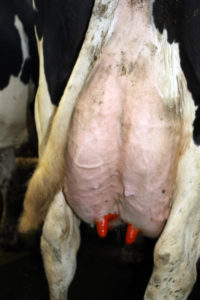
Treating the ewe or cow with calcium borogluconate solution usually results in rapid recovery. Most times the animal will return to a normal standing and grazing habit after only an hour. Sometimes it is necessary to repeat the treatment.
As mentioned above the interrelationships between minerals and the ionic state of the diet have been shown to have an effect on milk fever. This is a very technical area of nutrition and, if dietary adjustments are to be made in order to avoid the problem analytical accuracy is essential. In practical terms the following steps should be taken in order to minimise the risks.
- In adult sheep or cows, absorption of calcium from the diet is not increased by raising the calcium content of the diet three weeks before lambing or calving.
- Adjust the calcium content of the diet to ensure that the requirements shown in the table below are met in full in late pregnancy.
- Check that calcium, phosphorous, magnesium and vitamin D3 are all supplied at the right levels.
Calcium requirements of ewes in late pregnancy (grams per day) (MLC 1981)
(ARC 1994)
| Pregnancy Month 4 | Pregnancy Month 5 | |
| MLC ARC | MLC ARC | |
| Lowland Ewes (70 Kg) | 3.5 2.5 | 5.0 3.6 |
| Hill Ewes (50 Kg) | 1.8 1.9 | 2.5 3.2 |
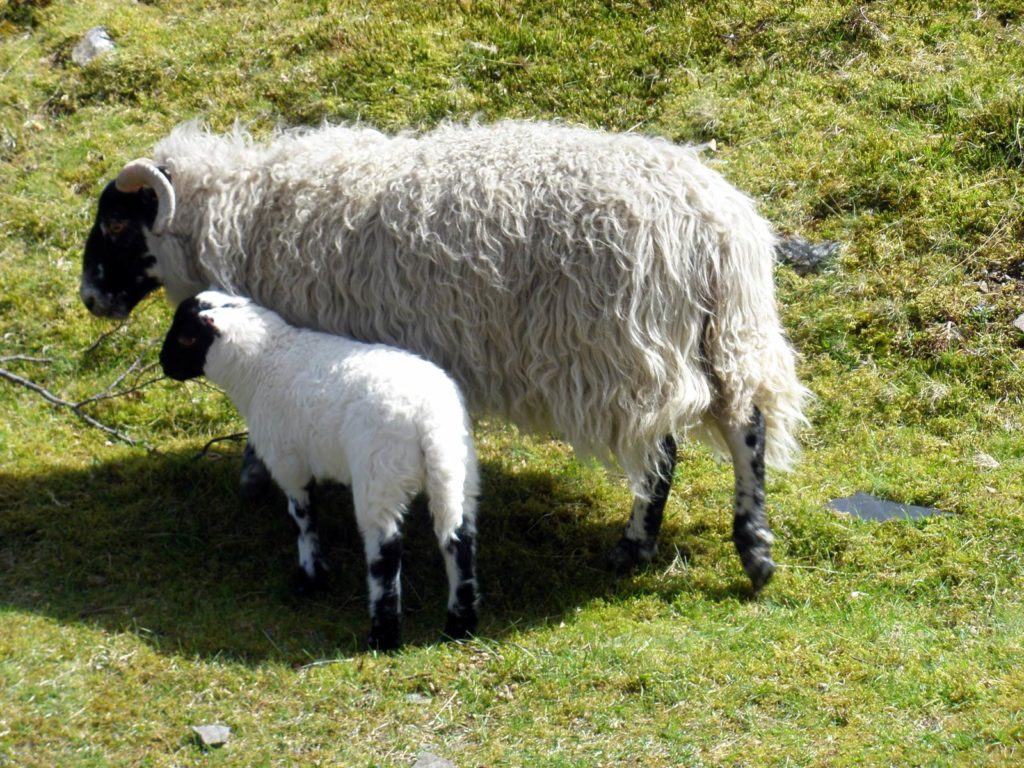
Note:- The difference in recommendation between the two authorities are due in part to the date of the publications, but this apparent difference is a typical example of how various authorities tend to recommend different advisory limits.
I tend to work mainly with ARC (NRC)(NDA) but their recommended nutrient levels for high output systems may be a little low in practise.
In 1990 the ARC working party had looked into the various different international recommendation systems for nutrient allowances for livestock. It was interesting to note that confidence in some of them seemed pretty low.
For example:- The old East German system built in a 25% addition to the estimates for maintenance energy just to cover for shortfalls in the calculated recommendation! To that end, the whole question of nutrient requirements for all livestock is currently under review (2020).
In practical terms, it is important to try and get close to the published figures in the appendix, because big over or under-estimates are bound to result in inefficiency and wastage of money.
Calcium deficiency in young animals will in cases of chronic under supply, produce a symptom known as Rickets. Rickets shows itself as misshaped bones, enlargement of the joints stiffness and lameness. The bones are also weak and easily broken. The symptoms of rickets are not specific to calcium, they can also be caused by chronic under supply of phosphorous and vitamin D3; and a chronic imbalance in the calcium : phosphorous ratio.
Calcium is of vital importance in the operation of muscle tissue. I have seen apparent calcium deficiency in beef cattle where the muscle fibres in the back legs have effectively failed to tense
and the animal cannot stand, instead it shuffles about on its hocks.
I am convinced that this symptom only occurs where there has been prolonged deficiency particularly during the first 6 months of life.
The farmer concerned in this case was a typical sceptic when it came to minerals and this was not helped when it was shown that the diet had been balanced properly but depended on ensuring that the right mineral inclusion had indeed been added by his employee’s. I don’t think that the mineral supplement had been included for some time, since after steps were taken to ensure that the ration was mixed in full we never saw any recurrence of the problem.
Excess calcium may interact and lock up a proportion of dietary iodine, zinc and selenium resulting in increased somatic cell count, foot problems, poor bulling response, etc.
Dietary sources of calcium
Calcium is naturally available to the animal from many food sources. Milk and green leafy crops especially legumes, are good sources. Roots and cereals tend to be bad sources. Most compounds and mineral supplements also include ground limestone or, better still, limestone flour.
The Calcium : Phosphorous ratio.
Getting the ratio between these two mineral elements wrong can be just as harmful as a dietary deficiency of either. The recommended range for ruminants is 2:1 to 1.5:1 or about 0.5% of DMI.
Intensive lamb production requires a wider ratio of say 4:1(Author 1999 to 2020) in order to help to prevent the formation of urinary calculi (kidney stones) in the castrate and ram lambs and bulls.
Phosphorous
Old moor land pastures are frequently of poor quality and low mineral content. Low levels of phosphorous will result in poor development of skeleton, stiffness of the joints etc, in a similar way to the deficiency symptoms of calcium.
Checking that the Ca : P ratio is correct and that dietary requirements as a whole, are being met is routine , but essential good practise.
Note:- It was known as long ago as the 1930’s that poor levels of dietary phosphorous could reduce the yield of milk protein. Casein is the largest fraction of milk protein and it has fairly high level of phosphorous within its complex structure.

Availability of minerals is very important since it isn’t going to be particularly helpful if the supply of dietary mineral appears to be up to requirement levels, if a big faction of the mineral is tied up and unavailable for use by the animal consuming it.
Phosphorous allows a very good illustration of the problem.
Experiments with young chicks, back in 1939, showed us that phytin phosphorous or Phytic acid is unavailable to the animal. The apparently good level of phosphorous in cereals is largely unavailable. In fact around 70% of cereal phosphorous is completely tied up.
Soya meals, groundnut, sunflower, peas, and field beans also contain around 70% of their phosphorous as phytin.
Recent work in 2000 by Frank Wright, (now Trouw Nutrition) has shown that the requirement for phosphorous in dairy rations has probably been overestimated.
Current computer models take this change into account but it is still worth adding extra phosphorous if there is a high level of aluminium in the diet since this metal is strongly antagonistic to phosphorous.
This problem is easily solved by including Di-Calcium or Magnesium Phosphate, in the mineral supplement.
Note: The use of bone meal, and animal proteins other than fish meal is banned in the UK for ruminants. These sources of phosphorous are no longer open to the nutritionist.
Magnesium
Magnesium is closely associated with calcium and phosphorous. It is very important to enzyme activation and the transport of energy rich molecules around the body.
Magnesium deficiency symptoms are very well known and relatively common. Adult animals do not mobilise magnesium from bone as easily as young stock so the condition is more common in older sheep and cows. Grass Staggers, Hypomagnesaemia, and grass tetany, are all names to describe this condition.
It is most commonly associated with animals that are turned out on to spring pastures that have a very low background level of magnesium. Spring calving cows are the most susceptible, since they have a very high demand for magnesium as a constituent of milk, and a very low supply from the forage. The drop in magnesium intake is very rapid and as a result body reserves are not mobilised fast enough.
There is also a chronic form, more common in grazed hill sheep and suckler cows, where plasma magnesium levels fall to a very low level over a long period of time. The clinical signs of the disease are usually brought about by stress factors like sudden changes from warm sunny dry weather to cold wet and windy weather.
The symptoms are quite distinct; the animal shows signs of nervous tremors, twitching facial muscles staggering gait and convulsions.
Recent research indicates that the ionic balance of the diet may have an effect on the likelihood of contracting the disease. Potassium is a major antagonist to magnesium, the use of high potash “K” fertilisers may well result in a much greater proportion of magnesium being tied up than normal. As a result of this high potassium “K” fertilisers, should not be used on spring grazing for sheep and cows.
Treatment is normally in the form of mineral supplementation of magnesium oxide, sold commercially as calcined magnesite.
Magnesium chloride is another way of supplementing magnesium. In some ways it is better than magnesium oxide. Although lower in its percentage it is more soluble. This means that use in dry cow rations is strongly recommended, typically adding an extra 100 grams per head per day will go a long way to preventing milk fever and its associated conditions in early lactation.
Calcined magnesite is commonly added to most spring, turnout minerals, and compound feeds as a routine precaution. It is advisable however to approach the feed supplier and ask whether or not provisions have been made to cover the need for extra magnesium in the grazing rations.
There are many ways of supplementing magnesium.
You will be offered any of the following:-
- Free access & In feed minerals
- Feed blocks.
- High magnesium compound feed nuts, rolls, & cobs.
- Mineral blocks.
- High magnesium salt licks.
- Molassed mineral buckets.
- High magnesium liquid feeds fed through ball feeders placed in the pastures.
- Water soluble magnesium for adding to the drinking water.
- Magnesium boluses.
- Grass fertilising treatments.
There are probably a few more techniques but these are the most common. This range is also used to supplement most of the trace elements needed in the diet.
Dietary magnesium may be sourced from yeasts, wheat bran, most protein sources especially linseed and cottonseed cakes. Clover leys are usual better than grasses and most broad leaved weeds are reasonably good providers of magnesium.
High magnesium diets should not be fed to bulls steers, fat lambs and rams. There is a tendency to encourage the formation of kidney stones (urinary calculi) when the diets are high in magnesium and phosphorous.
Copper
There has been much discussion on what the recommendations for copper requirements for livestock should be. Since the late 1990’s it has been suspected that the current recommendations for cattle at a legal maximum of 40 ppm is too high. Many liver autopsies recording a toxic loading serves to question this figure.
Currently (2020), we are commonly recommending 20ppm per Kilo of dry matter which is more in line with the rest of Europe and North America.
Copper is required for the following functions:-
- Immune system maintenance.
- Enzyme systems
- Reproduction.
- Growth.
- Strengthening structural proteins.
Copper is of critical importance to sheep. too much and they die, too little and they die! yes copper levels have to be just right. Copper is also very important for cows.
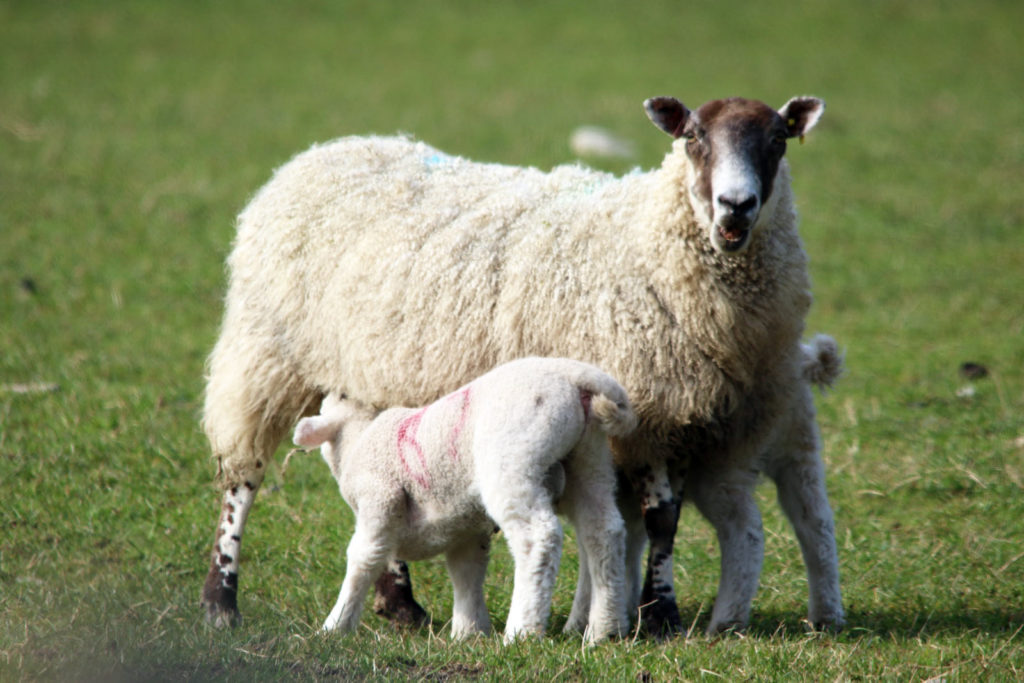
Copper is an essential trace element found in all of the animals body tissues. It has many functions but it is particularly important in the formation of red blood cells and producing crimp in wool.
Other important functions include effects on reproductive efficiency, growth rate, immunity, and bone fragility.
Copper deficiency is usually caused by either a simple deficiency in the diet or by being “locked up” by other elements, usually molybdenum, iron or sulphur. These elements interact with the copper in such a way that it is effectively unavailable to the animal.
Certain areas of the UK are particularly noted for effective copper deficiency. However liberal applications of lime to upland pasture, (Needed to improve soil fertility;) can also induce copper deficiency by increasing soil sulphur and molybdenum concentrations.
Dietary copper is available in quite adequate amounts in most non herbage feeds. Grain and cereal by-products usually have sufficient to avoid most problems. Sheep compounds are all carefully balanced to supply just the right amounts.
Copper deficiency or lock up in dairy cows will have an effect on bulling response. Lutelising hormone (LH) contains a significant amount of copper (and manganese) and deficiency will often show up as a reduced strength of heat.
Copper deficiency normally occurs when the sheep and cows are not being fed on supplementary feedstuffs. This is typical when trying to save money on feed bills in mild winters and early springs.
Symptoms of copper deficiency are classical and all too common in in sheep. The extreme form being “swayback” in young lambs. This is normally linked to deficiency, first in the ewe and then in the lamb diets. It is normally due to tie up by molybdenum and sulphur rather than pure copper deficiency. The lambs lose coordination in the front legs first and commonly if they can raise their hind legs they topple over. Often they exhibit an inability to stand and then death is the usual consequence.
Sometimes lambs suffer a chronic form of deficiency, this can occur when the ewes are turned on to deficient pastures after lambing and are unable to supply the lambs with enough copper from milk or from grazing. In this situation the lambs do not grow well and they tend to have poor fleeces with very little crimp.
Copper toxicity is also a big problem. The copper requirement of sheep is measured in parts per million and this means that it is very easily over fed. Pedigree breeds of lowland sheep like Suffolks Charolais and Texels are particularly susceptible to copper toxicity. This is particularly true of sheep kept indoors for appreciable lengths of time.
The North Ronaldsay breed also requires low levels of dietary copper.
All sheep minerals should have no copper added, although a very small amount in lamb feeder minerals can be useful.
The safest course of action if in doubt is to discuss with the vet and have some blood samples taken to check the serum copper levels and the take the veterinary advice on supplementation.
Treatment usually involves giving the ewe a dose of copper as an injection at lambing time. Occasionally the lambs are also injected at weaning.
Some straight feeds have very high copper levels and should be avoided for sheep. These include many distillery feed by-products like Dried Dark Grains and Pot Ale Syrup.
Recommended levels of copper are as follows:-
- For sheep 7-11 ppm
- For growing lambs 3 ppm
- For lambs prior to weaning 1- 2 ppm
- For dairy cows 12 to 20 ppm
Cobalt
Cobalt is required for the following functions:-
- Vitamin B12 synthesis.
- Fibre digestion.
- Appetite stimulation.
- Rumen fermentation
- Methionine metabolism.
Cobalt is one of the essential trace elements that is needed in only very small quantities by all livestock. It is essential for the production of vitamin B12 by the rumen micro-organisms, as a result, cobalt deficiency inevitably shows up as a deficiency of vitamin B12.
Cobalt is also a very important nutrient for the rumen bugs themselves, so contrary to the belief of some nutritionists, the addition of vitamin B12 alone to supplements is of limited value, since in order to actually feed the animal, it is important to encourage a healthy population of the rumen bugs. As a result of this, the best mineral supplementation should include both cobalt and vitamin B12.
Cobalt deficiency is a simple deficiency caused by low intake of the element rather than tie up by other mineral antagonists as for copper. Having said this, it is thought by some that very high levels of iron may have some effect on cobalt absorption.
The most acute form of cobalt deficiency is known as “Pine”. The affected sheep show loss of weight and anaemia, brought about by general loss of appetite. They also tend to have watery eyes, and dry fleeces. Lambs are affected more than ewes and as usual animals that are being fed on mineralised concentrates or free access minerals are unaffected.

Treatment is either by injecting vitamin B12 , which will give a rapid short term improvement; or by spreading cobalt sulphate typically at about 4 Kg per hectare (roughly 4 lbs per acre) over the grazing pastures. Some farmers prefer to mix the cobalt sulphate with cobalt chloride in equal proportions, either way the treatment is very effective and gives reasonably good cover for up to four seasons. Cobalt sulphate and cobalt chloride are very expensive so it is very important to make sure that the chemicals are spread evenly across the leys.
There are other ways of treating cobalt deficiency, these include oral dosing which has to be repeated about every 3 weeks since the cover is used fairly quickly. Mineral licks give good cover to the stock that eat them, it is fair to say that these products have improved in palatability in recent years. I can remember giving one of the early molassed blocks to a farmer to try one summer, it was not successful since we found that the block had remain pretty well untouched even by the cattle that had followed the sheep into the field two months after the block had been placed in the field.
It is important to remember to place free access minerals, feed blocks and mineral buckets near to a water source since the animals prefer to have a drink after feeding on these products.
Cobalt bullets are quite a good way of solving the free access palatability problem. They should be administered to the ewe at lambing time in order that the cobalt can be passed on in the milk through to weaning. Bullets are not infallible however, as many shepherds know some ewes are quite capable of regurgitating them and spitting them out! Once the lambs are weaned they can be dosed with cobalt bullets themselves.
Boluses containing cobalt along with other trace elements can be administered to suckler cows as a way of providing basic cover for long periods. Some give cover for up to 6 months, but we should be a little wary of ambitious claims by some sellers of these products.
Dry cows at grass may also benefit from the use of boluses, but there can be no doubt that daily supplementation using an in feed mineral mixed into a buffering feed is always going to be the most reliable way of insuring adequate cover.
Cobalt toxicity is relatively unknown because the animal seems to have no problem getting rid of it. Unlike copper, cobalt is not retained in the liver, and the ewe is therefore unlikely to suffer any problem. Good spring grass normally contains high levels of PUFA’s and can predispose selenium problems in grazing animals.
Dietary cobalt is variously recommended for both sheep and cattle at 0.11mg/Kg DMI.
Cobalt and Selenium are now required to be dust suppressed by bi-modular protection. BMP Cobalt and BMP Selenium replace Cobalt Sulphate and Sodium Selenite in mineral supplements. If the old forms are used the skull and Crossbones logo has to feature on the product label.
Zinc
Zinc is needed for the following functions in the body:-
- Maintenance of the immune system,
- Replacing the cellular lining of the teat canals,
- Keeping a healthy skin and fleece, and maintaining a healthy hoof & horn structure.
- Maintaining certain enzyme systems.
- Use as an antioxidant.
- Protein synthesis
- Wound healing, maintaining the uterine wall, and healthy gut lining.
There is no doubt that zinc is an important factor when considering the rate of healing of cuts and abrasions commonly occurring to some degree in most herds and flocks.
Zinc deficiency has been shown to have a significant effect in the dairy cows ability to deal with digital dermatitis.
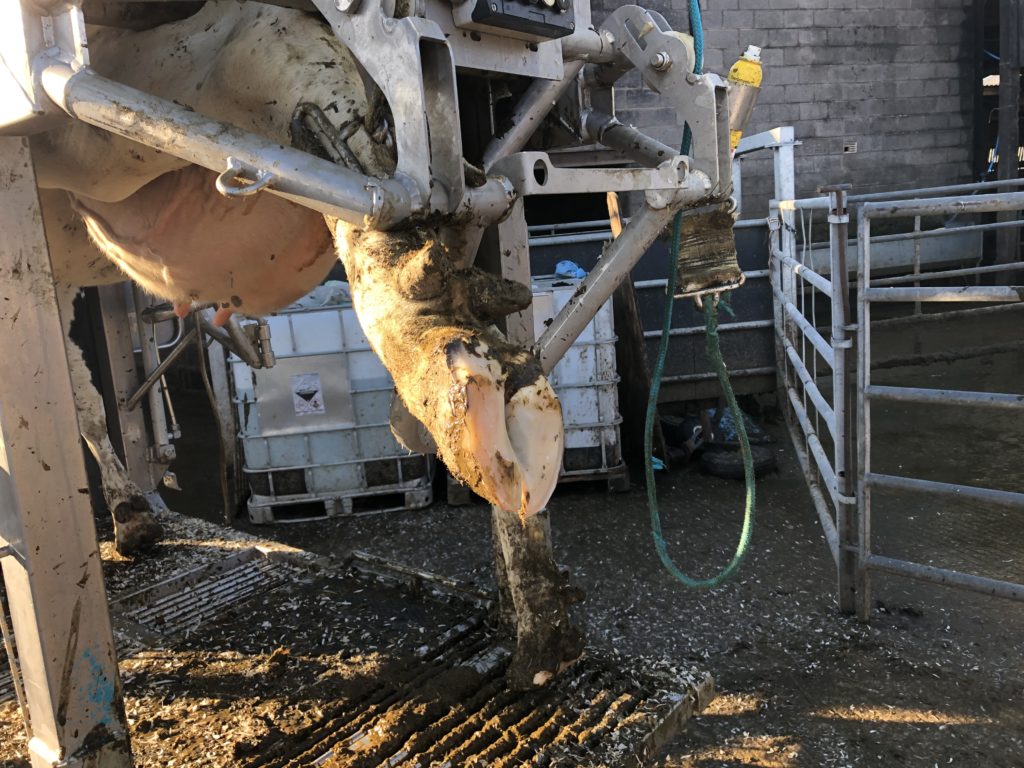
As a rule of thumb, sheep should receive about 35 mg of dietary Zinc per Kg DMI, Cattle should receive about 25 mg, per Kg DMI, and lactating cows between 20 mg per kg DMI and 35 mg per Kg DMI dependant on yield.
Toxicity occurs at around 700 mg per Kg DMI. Animals lose appetite and pregnant ewes will eventually die if left on diets at this level indefinitely.
Manganese
Manganese is required for the following functions:-
- Maintenance of the immune system.
- Enzyme systems.
- Bone strength and development.
- Reproduction, (hormones luteinising, oestrogen, and progesterone)
- Strong heat/oestrus.
Manganese seems to have more perceptible links to the health of pigs, chickens and turkeys than ruminants. However it is known that manganese deficiency results in poor reproductive performance and poor development of the skeleton in young animals.
Heavy applications of lime to upland pastures can result in manganese lock up so it is advisable to include manganese in the mineral supplements of all classes of ruminant.
Requirements for ruminants are recommended by the AFRC (1990) at 20 to 25 mg per Kg DMI for cattle, and in the absence of reliable data it is recommended at the same level for sheep.
Availability co-efficients can be as low as 1% from forages. This typically means that although there might appear to be plenty of manganese in a forage sample, the amount that is available is too low to fulfil the animals needs.
Toxicity is rare but at 100 times the recommended dose ie, 2.0 to 2.5 g per Kg DMI, animals may suffer depressed appetite and growth rates.
Excess manganese will lock up selenium.
Selenium and Vitamin E
Selenium is needed in the body for the following functions:-
- Antioxidant.
- Maintaining the immune system.
- Scavenging free radicals.
- Energy metabolism.
Selenium and Vitamin E have very closely related functions.
Selenium is present in the Glutathione Peroxidase enzyme, known to be of key importance in the transfer of energy around the body.
Vitamin E is a very powerful anti-oxidant. Antioxidants help to prevent the oxidation of poly-unsaturated fats (PUFA’s), by preferentially accepting free radicals. Free radicals are damage inflicting chemicals which destroy cell structure. Vitamin E ties them up before they can do any damage.
They are both implicated in the prevention of “White Muscle Disease” or “Stiff Lamb Disease”, a common condition of both young cattle and lambs.
In the congenital form, animals succumb to White Muscle disease, are often born dead or die within a few days of birth.
If born alive, they are unwilling to move and show signs of stiffness this condition can occur with animals during the first two months of life. Sometimes the young animals die of heart failure, this is due to the way in which the disease affects muscle tissues. After two months of age the condition is not so common because dietary intakes of vitamin E in particular tend to be much better.
Selenium and Vitamin E deficiency is also known to result in a high incidence of retained placentas in dairy cows. (This is also closely linked with milk fever).
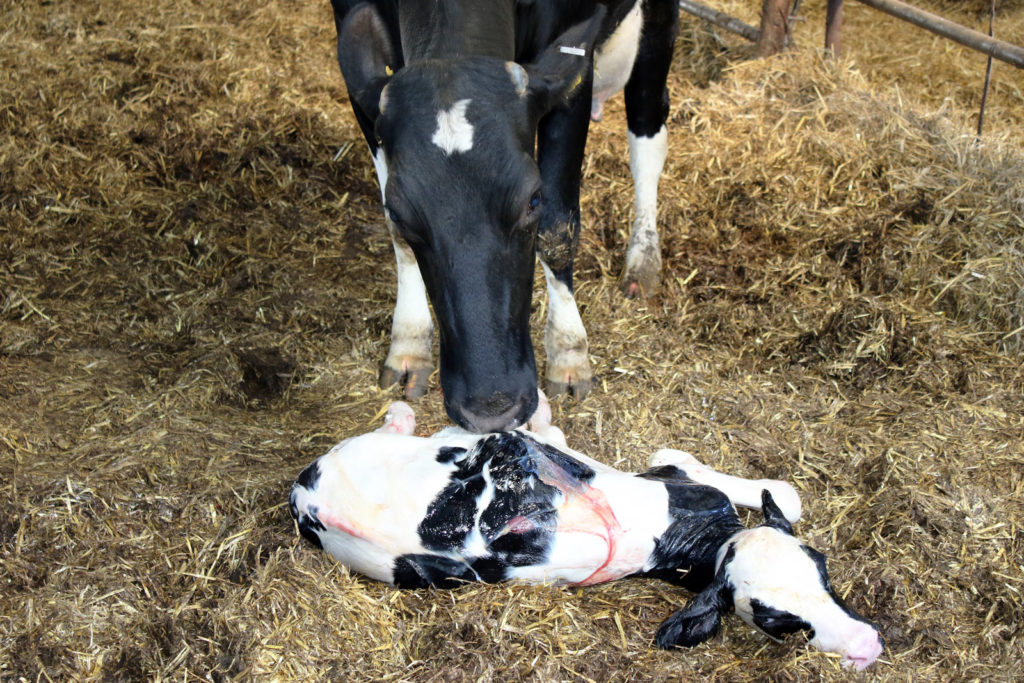
Selenium deficiency has also been linked to a high incidence of foetal resorption in sheep.
There is much evidence to show improved fertility and a reduction in mastitis via an improved immune response from feeding supplementary vitamin and selenium yeast.
Diets that contain high levels of polyunsaturated fatty acids (PUFA’s) , including Omega 3’s should be supplemented with extra vitamin E in order to provide the extra protection that the PUFA’s need from free radical destruction.
This is more apparent in high yielding dairy cow rations and, young calf and lamb diets, where there is a desire to include high levels of PUFA’s in order to enhance reproductive health in the former and development of nerves and muscle tissues in the latter. Good spring grass normally contains high levels of PUFA’s and can predispose selenium problems in grazing animals.
Daily allowances were very significantly increased in 2005 after it was shown how Vitamin E could reduce incidences of clinical and sub clinical mastitis in early lactation dairy cows.
Growing cattle, sheep and lambs, should receive at least 0.05 mg/Kg DMI of selenium and 80 mg/Kg DMI of vitamin E.
High yielding early lactation dairy cows seem to need slightly higher levels. American, European and UK, recommendations all vary. The recommendations made here are an up to date practical compromise
Recommendations for high PUFA diets are subjective since there is little if any trial data available to give any clear guidelines.
Good spring grass normally contains high levels of PUFA’s and can predispose selenium problems in grazing animals.
Selenium status needs to be reviewed and managed on most stock farms. Under typical circumstances, sheep farmers should supplement with extra selenium and vitamin E as follows:-
- Pre-tupping, to optimise conception and minimise resorption of the young foetus.
- Pre-lambing, to minimise problems with stillbirths and perinatal losses due to white muscle disease.
- Growing lambs, to ensure optimum growth and muscle development.
Recommended Levels of Dietary Selenium and Vitamin E (Mg/Kg DM) for Dairy Cows.
| Yield | 40 Litres | 30 Litres | 20 Litres | |||
| Selenium | Vitamin E | Selenium | Vitamin E | Selenium | Vitamin E | |
| Standard Diet | 0.1 | 80 | 0.1 | 80 | 0.1 | 80 |
| High PUFA Diet | 0.15 | 100 | 0.15 | 100 | 0.15 | 95 |
Note:- Diets supplemented with over 100 grams of Marine / High PUFA, oils would constitute a High PUFA diet.
Note:- recent research has revealed that sodium selenite is very poorly absorbed by the rumen.In the authors view, Seleno-methionine is much better than any other form of supplementary Selenium product.
Iodine
Iodine is required for the following functions:-
- Constituent of thyroid hormones.
- Hormones for growth of internal organs.
- Energy metabolism.
- Protein synthesis.
Iodine is an essential component of the hormone “Thyroxine”. thyroxine is produced in the thyroid gland, situated up astride the wind pipe. The thyroid gland could be described as “The Governor” in that it is responsible for controlling the rate at which the body’s functions are carried out. The production of thyroxine determines how lively or sluggish the animal behaves.
Iodine deficiency results in a swelling of the thyroid gland in an effort to compensate, this is a classic symptom and is popularly known as “Goitre”, which if allowed to continue unchecked will kill the animal by asphyxiation!
In Derbyshire, Iodine deficiency produced the same symptom in humans, this was known as “Derbyshire Neck”. Iodine deficiency is not confined to Derbyshire though, in fact it is widespread.
Certain feeds are also known to contain Goitre producing compounds. Brassicas, Soya meals and Groundnut, are all able to aggravate the condition, but they are only a problem when fed in large quantities.
Low milk yields, reproductive failure, irregular cycling, metritis (whites), retained placenta, and reduced growth rate, are all known to be influenced by Iodine supplementation.
As a rule supplementing diets to provide a total of 2.0 mg per Kg DMI should supply adequate levels for ruminants in general. Dry cow rations are generally recommended at 4.0 mg in an effort to ensure optimum health of the mother and her growing foetus.
Iron
Iron is a vital trace element. About 90% of the iron in the body is present as Haemoglobin, the red colouring of blood responsible for transporting oxygen around the body. Red blood cells are relatively short lived but as they break down their iron is transported back to the bone marrow and used to make new red blood cells. For this reason iron deficiencies are rare but anaemia does occur in animals following short term blood loss, by a wound or, at lambing or calving.
Excess iron can act as a pro-oxidant. This will actively increase the incidence of retained placentas in newly calved cows. The same excess will put more stress on the animal’s requirement for selenium and vitamin E
Excessive iron in the diet can impair the efficiency of uptake of phosphorous and other trace elements like copper and cobalt so it is not usual to supplement stock minerals with iron. Most dairy minerals do not contain any added iron, but the background levels from the major minerals used in the formulations will by quite high in any case.
Lamb milks should however be fortified with iron and intensive finishing diets where straw is the main forage will also need some added iron.
Normally grass is an excellent source of iron, so the generally agreed requirement of 30 to 40 mg per Kg DMI is achievable without supplement. Young calves and lambs may need as much as 100 mg per Kg DMI, and ewes and cows near calving about 50 Mg per Kg DMI.
Iron toxicity is one of those little forgotten issues that occasionally comes back to bite you when you least expect it.
In many cases, soil contamination in silage will increase dietary iron to a point where it is necessary to formulate very low iron mineral supplements in order to avoid adding to the problem.
I have recently come across a number of farms where iron in the silage is so high that it will undoubtedly be locking up phosphorous, copper and cobalt to such an extent that the fertility and performance of any livestock will be adversely affected.
Many farms use water from their own boreholes, these may also be extremely high in Iron content.
In these cases feeding conventional minerals will do very little to improve things and in some cases they may even make things worse.
This is a problem that needs addressing. Excess iron is an antagonist that will adversely affect many aspects of performance and general health.
Vitamins
Vitamins are organic compounds which are vital to the health, maintenance and production of the animal. They are required in tiny amounts but these amounts are vital.
There are two types of vitamin, fat soluble and water soluble. The fat soluble ones are Vitamins A, D, E, and K. I will deal with these first.
Vitamin A (Retinol)
Vitamin A is not found in plant origin foods but the precursor of vitamin A is “Carotene” and occurs as a yellowish red pigment of carrots, tomatoes and green forages. In dry crops like hay, the greener the crop the better the level of carotene. Concentrates are not particularly good sources of carotene, the exception being maize.
Carotene gets converted into vitamin a in the intestine walls and the liver, it is then stored for up to three months in the liver.
Vitamin A is perhaps best known for its effects on enhancing night vision, this is obviously helpful for grazing animals. Vitamin A is also very important for maintaining the optimum function of and the resistance to infections of the lining membranes of the eye and the gut walls. It is also vital to maintaining the efficient function of the urinary tract and the reproductive system.
Supplementation is good standard practise since it is generally considered that forages and normal concentrates alone will not supply sufficient carotene to satisfy the animals requirements.
Requirements are given in the appendix.
Vitamin D
There are in fact about ten different forms of vitamin D! Fortunately life can be simplified since there are two clear important versions, vitamin D2 and vitamin D3.
Vitamin D3 is more stable and more active. As with vitamin A, vitamin D is not common in plant tissues. Sun dried hay and fish oils are the main naturally occurring sources. As with Vitamin A it is good practise to supplement the diet with artificial, protected sources.
The Organic regulatory bodies need to get to grips with this issue as it has a direct effect on animal health and welfare.
Both Vitamins D2 and D3 are derived from their respective pro-vitamins in the presence of ultra- violate light. Vitamin D production therefore takes place in the skin. Animals like sheep with very thick fleeces are naturally poor at converting vitamin D so they absolutely must be supplemented wherever possible.
Vitamin D is central to the functioning of mineral transfer to and from the skeleton. It regulates the absorption of calcium from the gut, the resorption of phosphorous from the kidneys and the functioning of the parathyroid gland.
Rickets (see also calcium) is a consequence of a deficiency of either Calcium, Phosphorous, or Vitamin D or any combination of these three elements. It is primarily a disease of the young animal , but adults can suffer from the disease when milking heavily.
Vitamin D also affects fertility, diets that are deficient will result in irregular cycling.
Requirements are shown in the appendix.
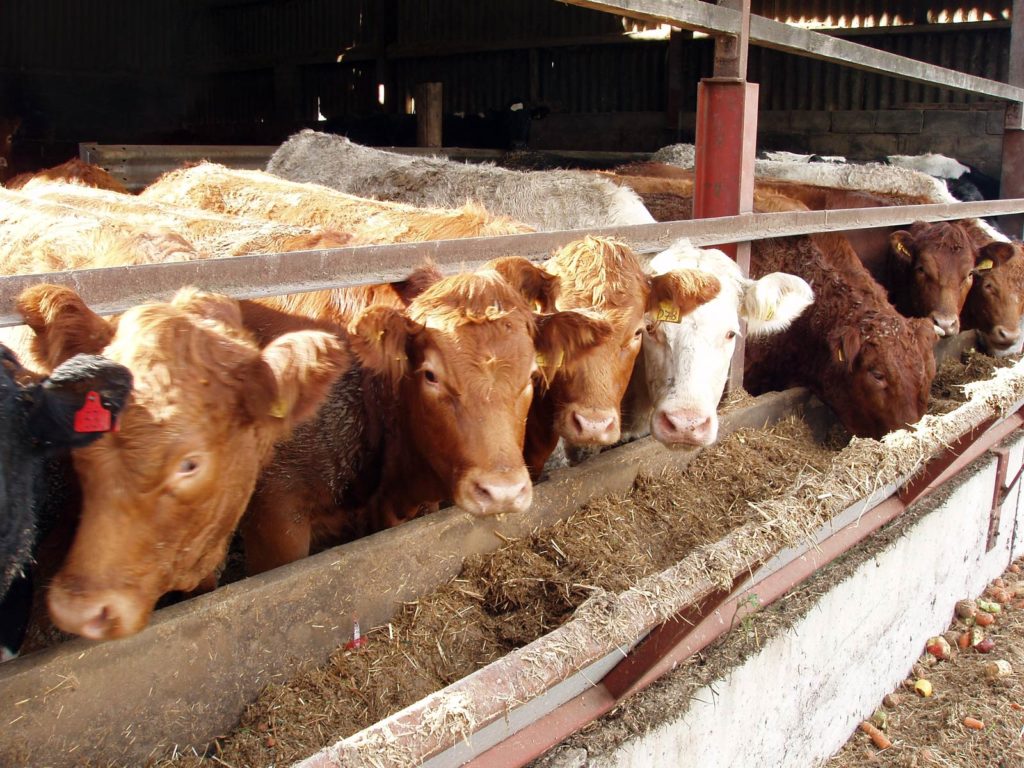
Vitamin E (Alpha Tocopherol )
Vitamin E is covered in the section on selenium.
Vitamin K
The last of the fat soluble vitamins is vitamin K.
Vitamin K is synthesised by the rumen bugs, it is found in green leaves and fish meal. Vitamin K is important in the production of prothrombin , which is instrumental in the clotting of blood.Since dietary supply deficiency is rare there is no need to supplement vitamin K.Secondary deficiencies may occur when anti-clotting agents like warfarin are consumed, usually from grain contaminated with rat poison.
The Vitamin B Complex
The 10 water soluble B vitamins are ale easily absorbed through the wall of the intestine. The B vitamins are found in forages, and they are manufactured by the rumen bugs in large enough quantities to prevent any serous deficiency from occurring. The exceptions are, Vitamin B 12 (Cyanocobalamin / Biotin), Vitamin B 1(Thiamine) and very rarely, Vitamin B 6 (Pyridoxine).
Vitamin B12 (see also Cobalt)
The main function of Vitamin B 12 also known as Cobalamin or Folate, is the metabolism of proprionates in ruminants. This is essential to maintaining good growth rates in fattening cattle and lambs. Deficiency results in a serious loss of appetite, the condition known as “Pine” in Sheep.
Diets which contain a high ratio of concentrates to forage will require supplemental biotin.
Biotin in this situation has given good yield responses (1 to 3 litres) and has also been shown to reduce sole ulcers, digital dermatitis, white line disease and fissures.
Vitamin B1
Also known as Thiamine is normally produced by the rumen microbes.
Vitamin B1 assists in the breakdown of carbohydrates, which provide energy in the diet. Vitamin B 1 deficiency has been found in the diets of young lambs and calves. Affected animals developed Cerebrocortical Necrosis (CCN). Affected animals are unable to coordinate movement and will after a few days, become comatose and later still, die.
The exact mechanism surrounding the cause of CCN is currently thought to be the production of an enzyme, Thiaminase, which breaks down thiamine and predisposes the symptoms of the disease.
It is thought that the problem is more likely to occur in high carbohydrate diets.
Prevention is by adding vitamin B1 to the supplements of lamb and calf creeps.
Vitamin B2
Vitamin B2, also known as riboflavin, is not required in the diet of adult ruminants because it is readily synthesised in the rumen.
Vitamin B3
Vitamin B3 also known as Niacin is significantly important for the metabolism of animals and human beings due to its incorporation into the coenzymes NAD and NADP.
For dairy cows, the microbial synthesis of niacin in the rumen is an important source besides its availability from feed and internal formation.
This vitamin is involved in various energy-yielding pathways and for synthesis of amino acid and fatty acid; for which it is important for milk production.
Vitamin B3 has the unique feature of liver detoxification of blood portal ammonia to urea, and liver metabolism of ketones in ketosis.
Supplementation of niacin has beneficial effects on growth of cattle. The production performance of dairy cows fed with niacin at 6g/day may not be satisfactory, but supplementation of 12g of niacin per head per day can increase milk production by about 0.5 litre.

Supplementing dairy cows with a dose of 6-12g of niacin will not only protect them from various metabolic diseases but will also help them defend from severe heat stress; ultimately leading to improved health status and milk production potential.
Vitamin B5
Vitamin B5, also known as pantothenic acid, is not normally required in the diet of adult ruminants because the rumen microbes synthesise adequate amounts.
Vitamin B6
Vitamin also known as Pyridoxine, B6 plays a major part in the absorption of amino acids from the intestine. There is some evidence to suggest that enhancing the diets of young lambs with supplementary B6 may improve growth rates.
Vitamin B 7 (Vitamin H)
Vitamin B7 also known as Biotin is a water-soluble B-complex vitamin that is produced by the rumen microbes.
New studies have shown biotin could be a limiting nutrient for high producing cows.
Supplemental biotin can improve hoof health and hoof hardness. Studies have shown significant reductions of sole ulcers, heel erosion, heel warts, claw lesions, and sand cracks when biotin is supplemented (20 mg/day) for 8-12 months.
Biotin is also a needed cofactor for body enzymes and many metabolic processes. Milk production responses to supplemental biotin have been seen.
Vitamin B 9 (Folic Acid)
Vitamin B9 plays an essential role in DNA and methionine metabolism.
Folic Acid has been shown to improve the production of healthy red blood cells. It is used in human nutrition to treat or prevent folate deficiency (anaemia). Trials have shown that adding folic acid to close-up dry cows and ewes has improved the transfer of folic acid to the calf or lamb. This occurs via the placenta and the colostrum.
The supply of folates by the diet and the synthesis by rumenal microflora is sufficient to prevent folic acid deficiency in dairy cows and ewes, and to maintain normal gestation and lactation, but not to achieve optimum production of milk and protein in twin or triplet-baring animals.
Folic acid deficiency shows itself as reduced growth rates in young animals due to the inability of the blood circulation to transfer adequate nutrients around the body.
Conversion Factors
| To Convert; | Multiply by |
| Calcium to Calcium Oxide | 1.42 |
| Calcium to Calcium Carbonate | 2.5 |
| Calcium to Dicalcium Phosphate | 3.84 |
| Calcium Carbonate to Calcium | 0.4 |
| Calcium Oxide to Calcium | 0.7 |
| Cobalt to Cobalt Sulphate | 4.76 |
| Cobalt Sulphate to Cobalt | 0.21 |
| Copper to Copper Sulphate | 4 |
| Copper Sulphate to Copper | 0.26 |
| Dicalcium Phosphate to Calcium | 0.26 |
| Dicalcium Phosphate to Phosphorus | 0.18 |
| Ferric oxide to Iron | 0.7 |
| Iodine to Potassium Iodate | 1.69 |
| Iron to Ferric Oxide | 1.4 |
| Iron to Iron Sulphate | 2.67 |
| Iron Sulphate to Iron | 0.375 |
| Manganese to Manganese Sulphate | 3.03 |
| Manganese Sulphate to Manganese | 0.33 |
| Magnesium to Magnesium Oxide | 1.67 |
| Magnesium Oxide to Magnesium | 0.6 |
| Phosphoric Acid to Phosphorus | 0.44 |
| Phosphorus to Dicalcium Phosphate | 5.56 |
| Phosphorus to Phosphoric Acid | 2.27 |
| Potassium Iodate to Iodine | 0.59 |
| Zinc to Zinc Sulphate | 2.32 |
| Zinc Sulphate to Zinc | 0.43 |
The conversion factors can be used to calculate the elemental content of a compound, or the amount of compound required to contain a given quantity of an element.
Summary of the Effects of Mineral Deficiency and Toxicity
| Mineral & Vitamin | Effect | Deficiency |
| Calcium | Development of bones and teeth, Muscle function, Blood clotting, Milk production. | Milk Fever Rickets |
| Phosphorus | Development of bones and teeth, Milk production Carbohydrate & energy metabolism. | Rickets Infertility |
| Magnesium | Bone development, Nerve function, Carbohydrate metabolism. | Grass staggers |
| Salt | Osmosis, Food digestion, palatability. | Poor growth & feed use. |
| Vitamin A | Skin & Hair formation, Mucus membrane protection | Night blindness, Infertility, Weak & Blind young stock |
| Vitamin D3 | Controls absorption of Calcium | Retarded growth, Rickets. |
| Vitamin E | Anti-oxidant, Immune system | White muscle disease, Stiff Lamb, Muscular Dystrophy. |
| Vitamin B12 | Mobilisation of fats, Synthesis of fatty acids, Enzyme systems. | Poor milk quality, Pine, Poor finish to beef, Poor appetite. |
| Iron | Blood production, enzymes | Retarded growth, Anaemia. |
| Cobalt | Vitamin B12 production, Enzymes | Pine in sheep, poor appetite. |
| Manganese | Skeleton growth, Metabolic management, Enzymes. | Poor growth, Infertility. |
| Copper | Blood production, Enzyme systems, Hair and wool colour. | Anaemia, Hair pigments, poor growth, Swayback in Lambs. |
| Zinc | Production of Skin, Hair & Wool, Enzyme systems, Immune system. | High cell counts Higher risk of severe digital dermatitis and soft hooves Reduced immune response |
| Iodine | Thyroid Hormone synthesis. | Goitre, Infertility, Abortion. |
| Selenium | Anti-oxidant, Immune system, Energy transfer. | Muscular Dystrophy, White Muscle Disease, Stiff Lamb, Reproductive control. |
Requirements of the Major Elements
| Animal | Ca | P | Mg | Na | Cl | K | S |
| g/kg | g/kg | g/kg | g/kg | g/kg | g/kg | g/kg | |
| NRC | NRC | NRC | NRC | NRC | NRC | NRC | NRC |
| Calf | 5 | 3 | 1 | 2 | 2 | 6.5 | 2.9 |
| Dairy Cow | 6-8 | 3.5-4.5 | 1.1-2.9 | 2.0-3.4 | 2.5-4 | 9-12 | 2 |
| Beef | 1-5 | 0.5-2.5 | 1-2 | 0.6-0.8 | 6-7 | 1.5 | |
| Heifer | 3.7 -4.1 | 1.1 | 0.7-0.8 | 1-1.2 | 4.7 | ||
| Sheep | 2-2.8 | 1.6-3.8 | 1.2-1.8 | 0.9-1.8 | 5-8 | 1.4-2.6 | |
| JJT | JJT | JJT | JJT | JJT | JJT | JJT | JJT |
| Calf | 8 | 5 | 1 | 4-6 | 2 | 6.5 | 2.9 |
| Dairy Cow | 8 | 3.5 | 2.5 | 1.5-2 | 2.5-4 | 9-12 | 2 |
| Beef | 3.5-6 | 3 | 1.5 | 0.75 | 2.5-5 | 7 | 2-3 |
| Heifer | 5 | 3.5 | 2 | 0.75 | 1.5 | 6 | 2 |
| Sheep | 3.5-7 | 4 | 2 | 1 | 2-3 | 8-15 | 2 |
Note: Close Up dry cow diets should be balanced according to the Anionic / Cationic balance DCAD unless a calcium binder or a very low potassium diet is used.
‘JJT’ in the tables in this section refers to the author’s own views on appropriate targets.
Note: Figures are best available at time of publication. 02/2020
Requirements of the Key Trace Elements
| Animal | Cu | Zn | Mn | Co | I | Se |
| mg/kg | mg/kg | mg/kg | ppm DM | ppm DM | ppm DM | |
| NRC | NRC | NRC | NRC | NRC | NRC | NRC |
| Calf | 10 | 30 | 40 | 0.1 | 0.25 | 0.3 |
| Dairy Cow | 9-18 | 45-75 | 12-24 | 0.11 | 0.34-0.88 | 0.3 |
| Beef | 10 | 30 | 20-40 | 0.1 | 0.5 | 0.1 |
| Heifer | 0.1 | 0.5 | ||||
| Sheep | 7-11 | 20-33 | 20-40 | 0.1-0.2 | 0.1-0.8 | 0.2 |
| JJT | JJT | JJT | JJT | JJT | JJT | JJT |
| Calf | 10 | 40 | 50 | 0.1-0.2 | 0.5 | 0.3 |
| Dairy Cow | 12-15 | 45-80 | 50-80 | 0.2-0.4 | 0.4-0.9 | 0.3 |
| Beef | 10 | 30 | 50-80 | 0.2-0.4 | 0.5 | 0.2 |
| Heifer | 12-15 | 50-70 | 50-80 | 0.2-0.4 | 0.5 | 0.3 |
| Sheep | 7-11 | 50 | 50 | 0.2 | 0.4 | 0.3 |
Disclaimer:
Note: All figures quoted are guidelines and requirements may vary in particular management and environmental conditions.
JJT, LSFS Ltd and any employee thereof cannot accept any liability arising from the implementation of any of the data shown in this reference work in the context of any use or reference to these figures.
